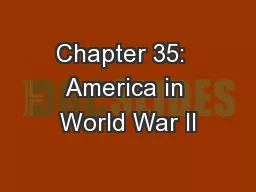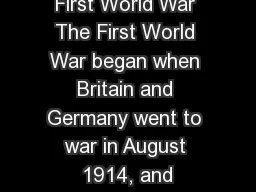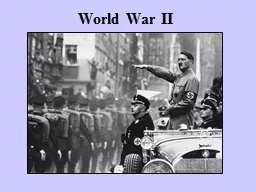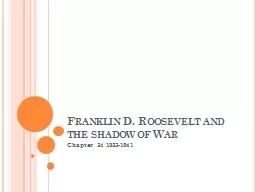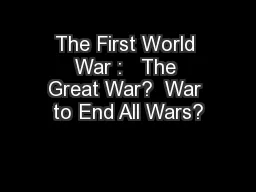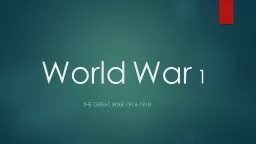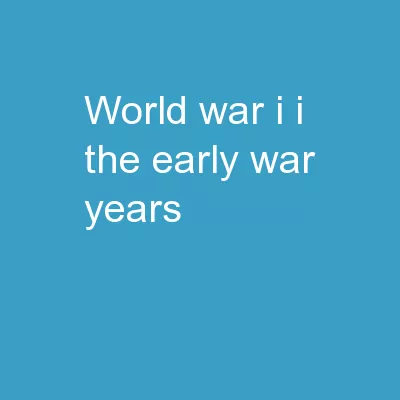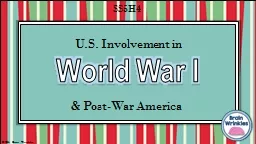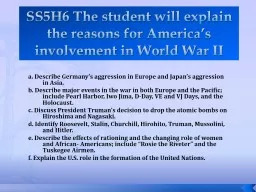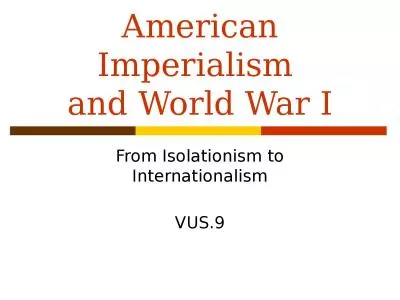PPT-Chapter 35: America in World War II
Author : kittie-lecroy | Published Date : 2018-10-20
Women and World War II Rosie the Riveter New opportunities because of the demand for workers Still faced hostility in male dominated businesses Were expected to
Presentation Embed Code
Download Presentation
Download Presentation The PPT/PDF document "Chapter 35: America in World War II" is the property of its rightful owner. Permission is granted to download and print the materials on this website for personal, non-commercial use only, and to display it on your personal computer provided you do not modify the materials and that you retain all copyright notices contained in the materials. By downloading content from our website, you accept the terms of this agreement.
Chapter 35: America in World War II: Transcript
Download Rules Of Document
"Chapter 35: America in World War II"The content belongs to its owner. You may download and print it for personal use, without modification, and keep all copyright notices. By downloading, you agree to these terms.
Related Documents

